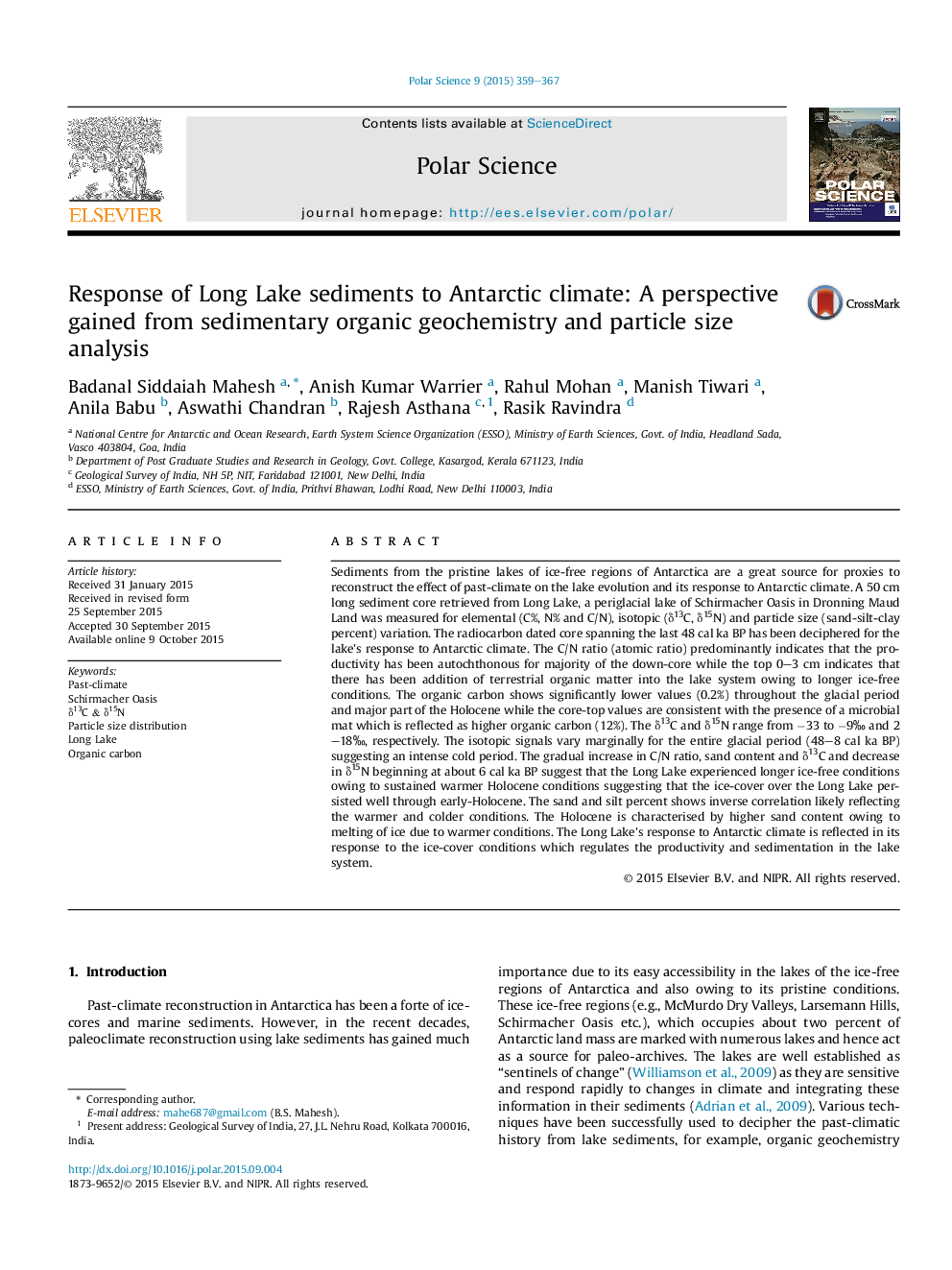| کد مقاله | کد نشریه | سال انتشار | مقاله انگلیسی | نسخه تمام متن |
|---|---|---|---|---|
| 4683166 | 1349281 | 2015 | 9 صفحه PDF | دانلود رایگان |
Sediments from the pristine lakes of ice-free regions of Antarctica are a great source for proxies to reconstruct the effect of past-climate on the lake evolution and its response to Antarctic climate. A 50 cm long sediment core retrieved from Long Lake, a periglacial lake of Schirmacher Oasis in Dronning Maud Land was measured for elemental (C%, N% and C/N), isotopic (δ13C, δ15N) and particle size (sand-silt-clay percent) variation. The radiocarbon dated core spanning the last 48 cal ka BP has been deciphered for the lake's response to Antarctic climate. The C/N ratio (atomic ratio) predominantly indicates that the productivity has been autochthonous for majority of the down-core while the top 0–3 cm indicates that there has been addition of terrestrial organic matter into the lake system owing to longer ice-free conditions. The organic carbon shows significantly lower values (0.2%) throughout the glacial period and major part of the Holocene while the core-top values are consistent with the presence of a microbial mat which is reflected as higher organic carbon (12%). The δ13C and δ15N range from −33 to −9‰ and 2–18‰, respectively. The isotopic signals vary marginally for the entire glacial period (48–8 cal ka BP) suggesting an intense cold period. The gradual increase in C/N ratio, sand content and δ13C and decrease in δ15N beginning at about 6 cal ka BP suggest that the Long Lake experienced longer ice-free conditions owing to sustained warmer Holocene conditions suggesting that the ice-cover over the Long Lake persisted well through early-Holocene. The sand and silt percent shows inverse correlation likely reflecting the warmer and colder conditions. The Holocene is characterised by higher sand content owing to melting of ice due to warmer conditions. The Long Lake's response to Antarctic climate is reflected in its response to the ice-cover conditions which regulates the productivity and sedimentation in the lake system.
Journal: Polar Science - Volume 9, Issue 4, December 2015, Pages 359–367
